French astronaut Thomas Pesquet has captured thousands of photos of Earth during his six-month mission aboard the International Space Station (ISS).
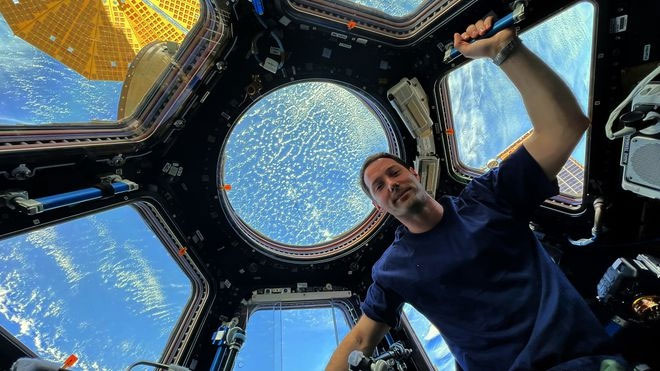
Astronaut Pesquet from the European Space Agency has returned to Earth after nearly six months participating in the Crew-2 mission on the ISS. His colleagues included Shane Kimbrough and Megan McArthur from NASA and Akihiko Hoshide from the Japan Aerospace Exploration Agency (JAXA).
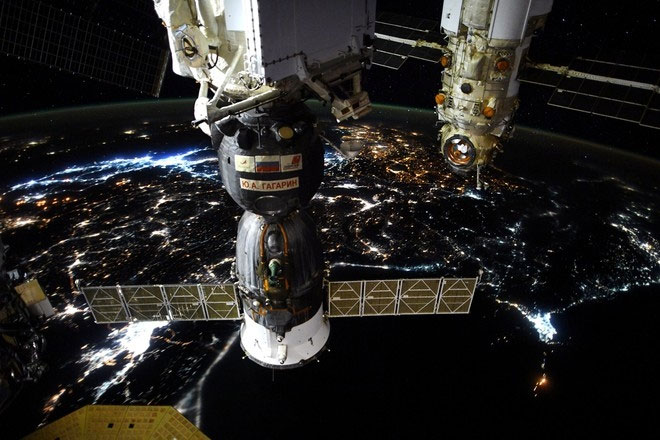
According to Business Insider, the astronauts began their journey back to Earth on November 7 aboard SpaceX’s Crew Dragon spacecraft, landing in the Gulf of Mexico the following day. Pesquet’s job was to photograph Earth. In six months, he took over 245,000 photos from an altitude of 400km.
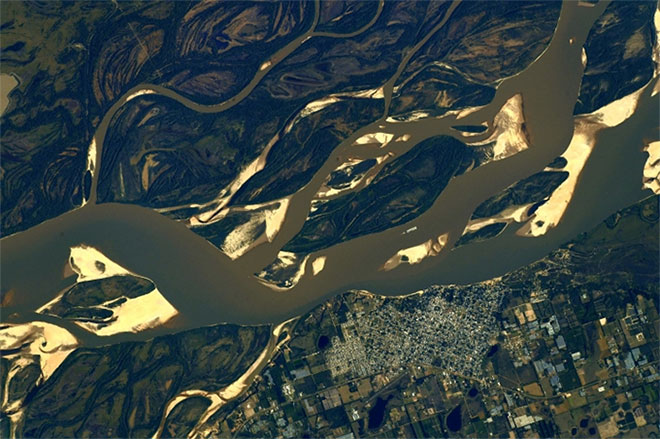
This photo taken on July 9 captures the Paraná River and part of Uruguay. According to Pesquet, the photo was taken at sunset, giving the surrounding landscape a hint of pastel pink.
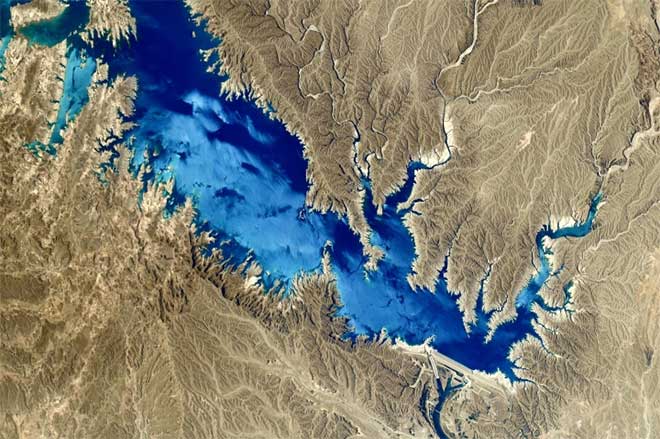
Photo of the Karkheh Dam in Iran taken on July 30. “I was surprised by the blue water in the photo, contrasting with the dry land,” Pesquet shared on Flickr.
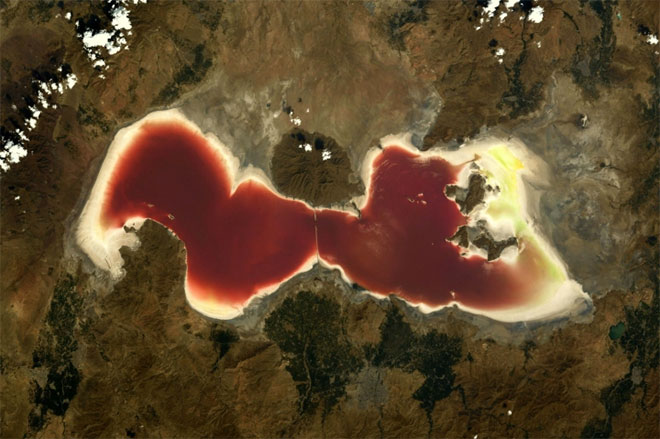
A salt lake in Iran captured on August 17. On Pesquet’s Flickr account, many comments expressed amazement at the view of Earth from hundreds of kilometers up.
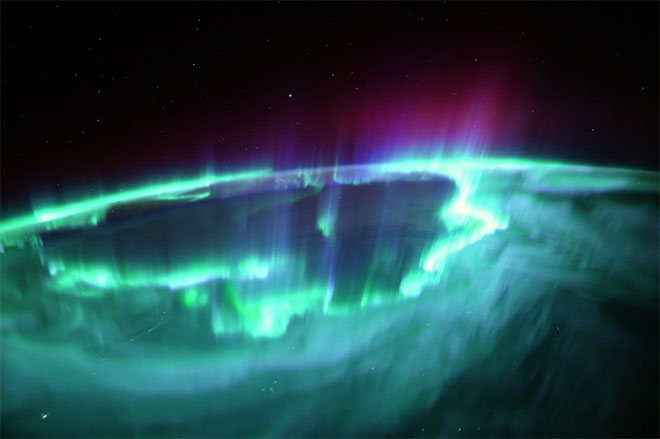
Earth’s auroras captured by Pesquet on November 4. This was a strong aurora, created after a solar energy explosion. “Some areas of the aurora were even higher than the position of the space station,” Pesquet shared.
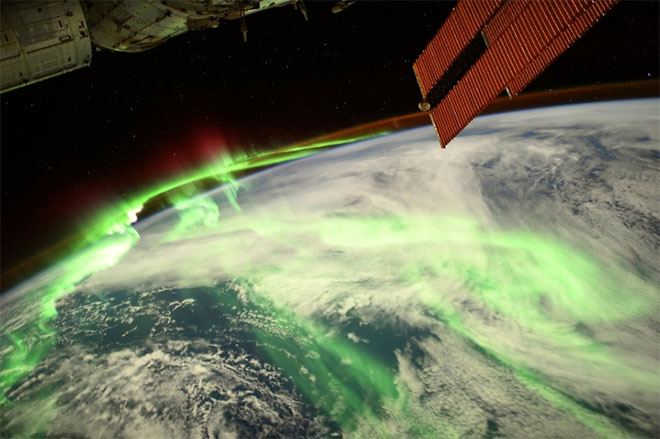
An aurora with green colors captured on August 20. During his six months on the ISS, Pesquet saw 15-20 auroras with varying colors and intensities.

Photo taken on March 29 capturing the coast of Namibia, a country in Africa. The Crew-2 mission was the third time SpaceX, the aerospace company of billionaire Elon Musk, has transported astronauts to the ISS, and it was also the first time a reused rocket was used for a NASA mission.
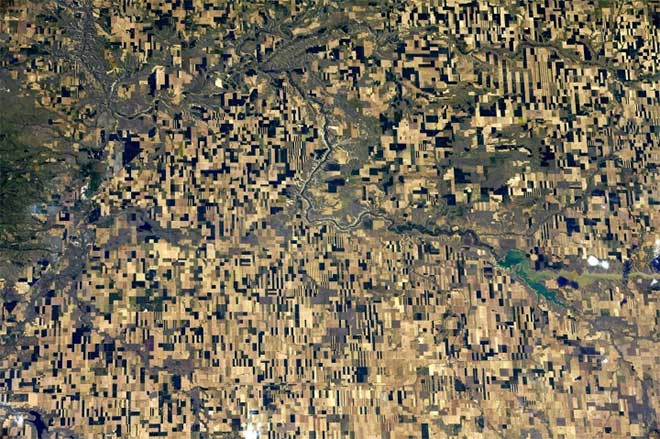
Photo taken on June 3 capturing a crop art field in Canada, which looks like a barcode or a computer glitch from afar.
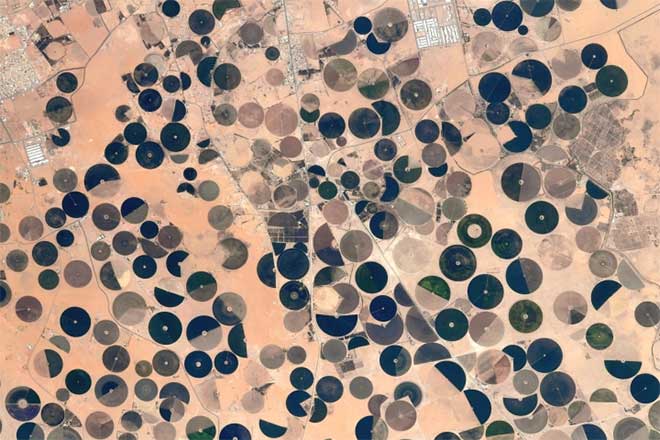
While flying over the African continent, Pesquet captured circular fields in the desert. “The round fields, squares, or salt lakes are not very beautiful up close, but they amaze us when viewed from above due to their large size,” Pesquet shared.
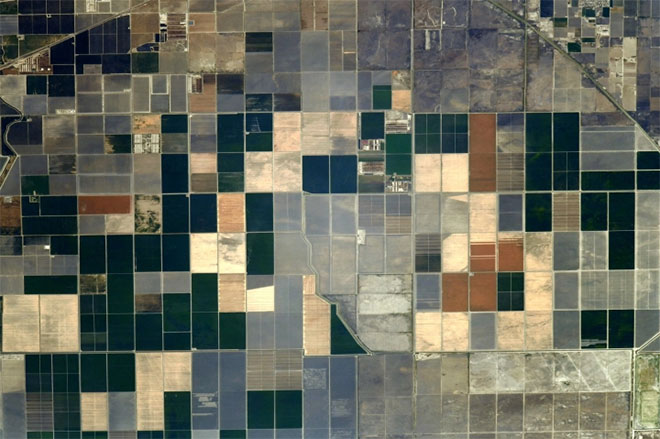
A field captured on August 17 with rectangular color patches, which Pesquet likened to a work of art when viewed from above. Unable to pinpoint the location, Pesquet suggested that this field is either in Mexico or the southwestern United States.
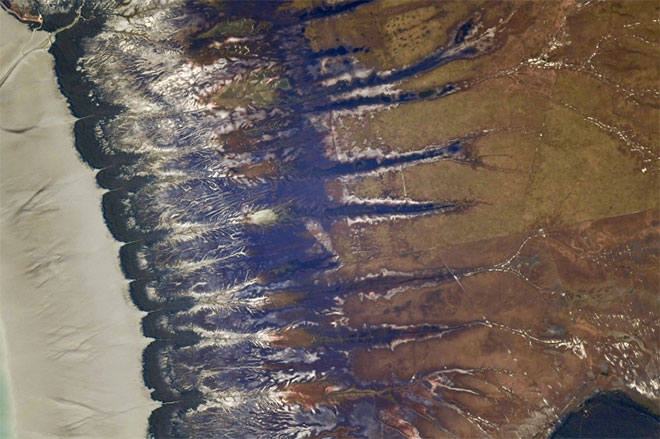
These colorful patterns are actually a sand dune in Australia, captured on May 14.
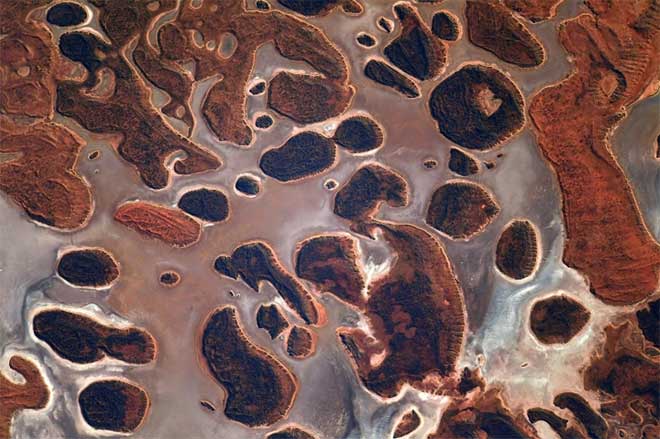
A salt lake in Australia with reddish-brown land masses in the white water.
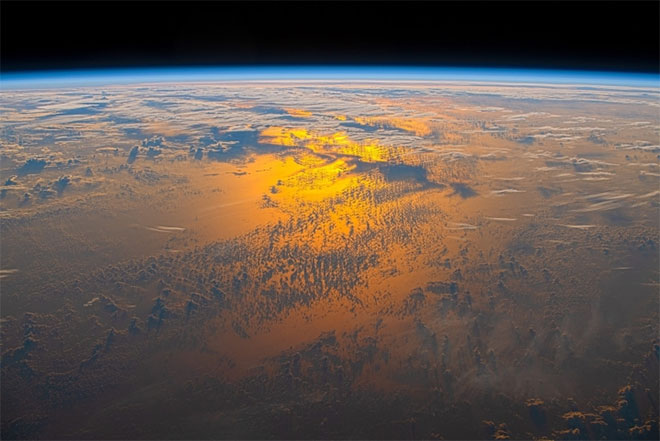
Traveling at 28,000 km/h, the ISS orbits Earth every 90 minutes, allowing astronauts to witness 16 sunsets and sunrises each day. This is a photo of the sunset over the ocean taken on June 15.
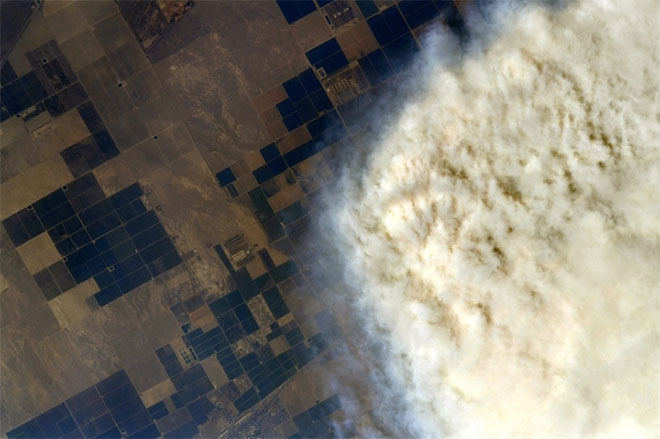
From an altitude of 400km above sea level, astronauts can also see some weather phenomena from the ISS. This photo captures smoke covering the area near Sequoia National Park in California on August 20.
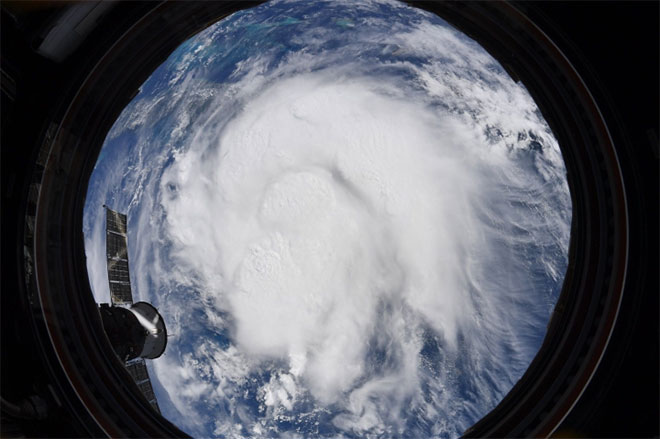
This photo taken on July 4 captures Tropical Storm Elsa, which prompted New York to declare a state of emergency. “What shocked me during the mission was seeing extreme weather and climate phenomena,” Pesquet shared.
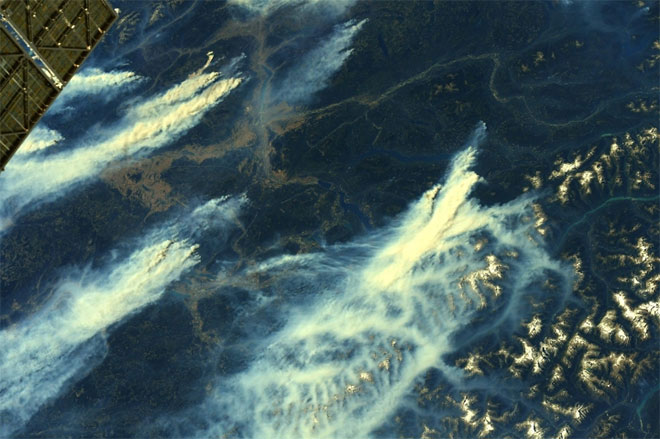
Smoke rising from forest fires in Canada on August 12. At the COP26 climate change conference, Pesquet discussed with French President Emmanuel Macron from the ISS about humanity’s response to climate change.
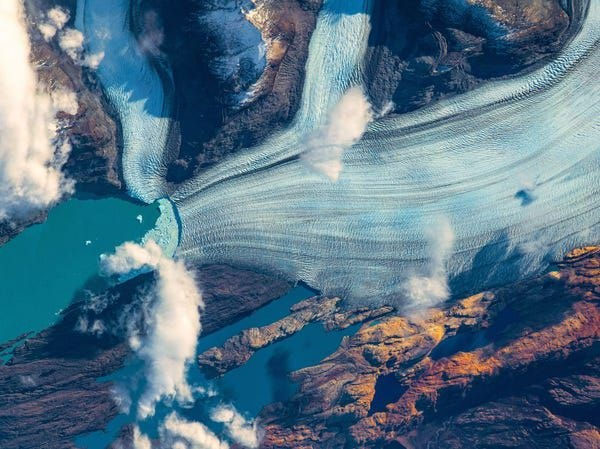
“Year after year, we are breaking records for wildfires, storms, and floods. I can see a clear difference (in weather phenomena) compared to missions 4-5 years ago,” Pesquet told the French President. The photo above captures Upsala, a melting glacier.
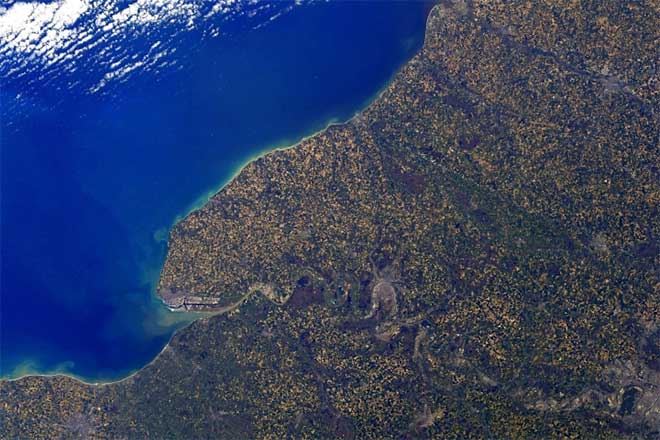
Photo capturing the Normandy region (France), Pesquet’s hometown when he first boarded the ISS on April 28.
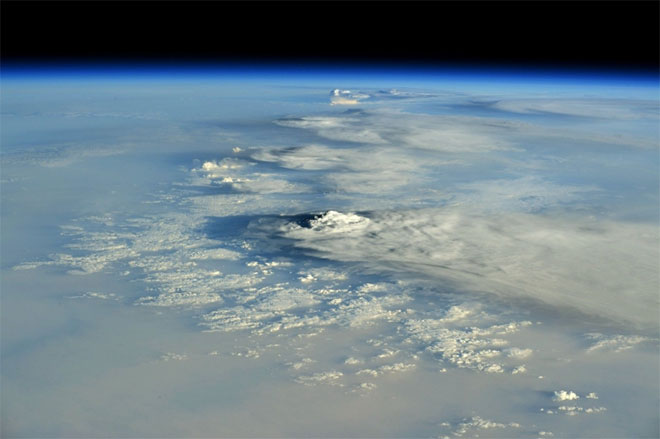
Clouds moving through Earth’s atmosphere on June 11. “When you look at Earth from space, you realize its resources are very limited,” Pesquet shared.
















































